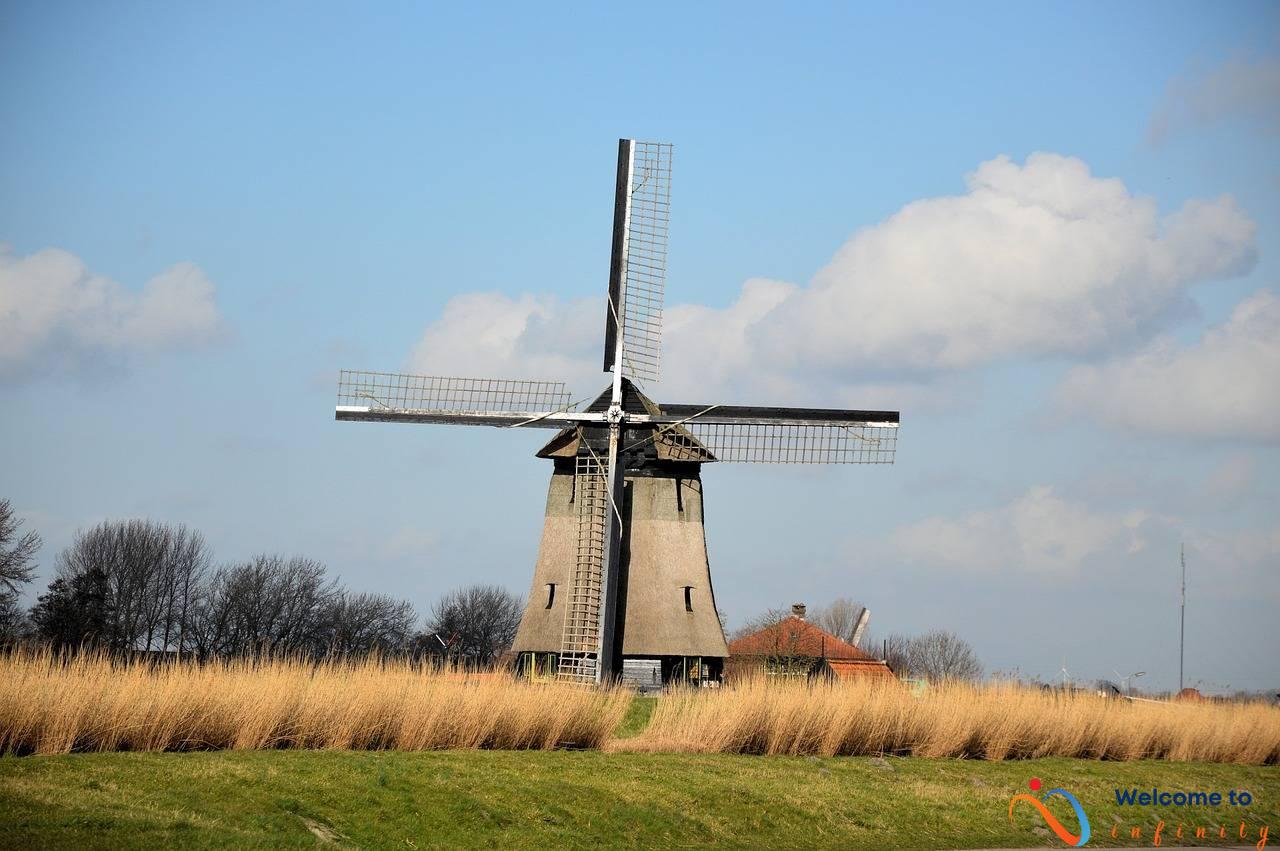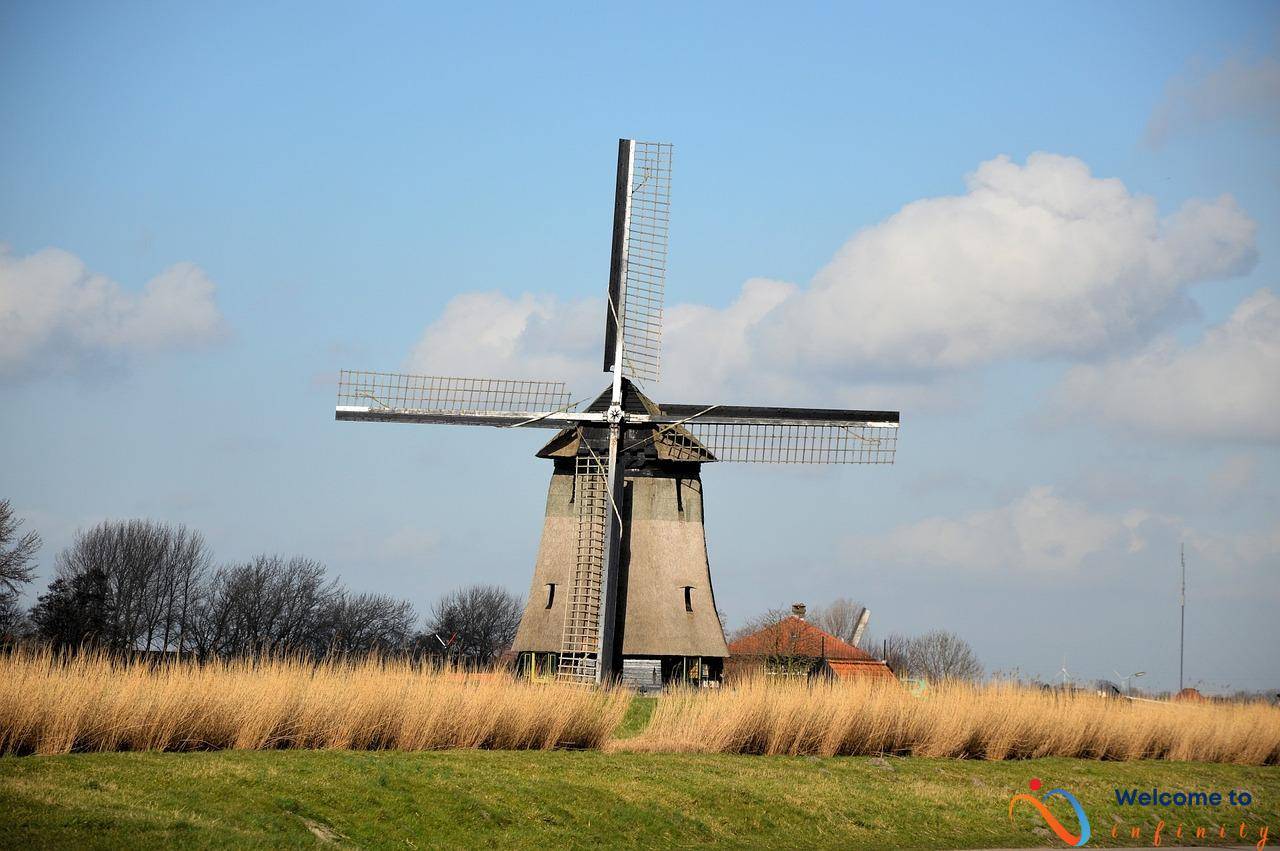Cultural preservation is crucial for protecting the diversity of cultural practices that have existed for centuries. The world is full of unique cultural practices that are at risk of being lost forever due to various factors. The loss of cultural practices not only erases the identity and traditions of various communities but also leads to the homogenization of the world's cultural landscape.
This article aims to explore the importance of cultural preservation and how it can help protect endangered cultural practices for future generations. Cultural preservation is all about safeguarding the cultural heritage of different communities by protecting and promoting their cultural practices. Preserving cultural practices ensures their continuity and transference to the next generation.
Many cultural practices are endangered due to globalization, modernization, and environmental factors. Globalization has made it possible for people to access products and services from all over the world, but it has also resulted in the loss of cultural identity, as people adopt new, globally accepted cultural practices, abandoning their own. Environmental changes and disasters, such as natural disasters and climate change, can also have devastating effects on cultural practices, as they lead to the loss of valuable cultural artifacts and sites.
In conclusion, cultural preservation is crucial for protecting the diversity of cultural practices and safeguarding the heritage of different communities. It is essential to collaborate between government agencies and local communities to develop policies and measures to safeguard cultural practices. Cultural institutions and organizations also play a significant role by providing resources and funding to support the preservation of cultural practices. Furthermore, education and awareness are essential in preserving cultural practices and passing them on to future generations.
Why is Cultural Preservation Important?
Cultural preservation plays a vital role in protecting the identities and traditions of various communities around the world. Every community has its unique cultural practices that represent their heritage, values, beliefs, and way of life. These practices passed on from generation to generation and form the foundation of a community's identity. Therefore, it is essential to preserve these practices to maintain diversity and ensure the continuity of various cultures for future generations.
Cultural preservation is vital to protect the rich cultural heritage of the world that has been developed over the centuries. The loss of cultural practices and heritage can lead to the homogenization of cultures and the loss of diversity. The extinction of cultural practices can result in the disappearance of unique skills, knowledge, traditions, and values. As a result, preserving these practices is necessary to retain the richness and diversity of cultural identities.
Preserving cultural practices also promotes inter-cultural understanding, mutual respect, and peaceful co-existence among diverse communities. Cultural practices provide an opportunity for people to learn about different cultures, values, beliefs, and traditions, which can enhance cross-cultural understanding. Furthermore, preserving cultural practices can contribute to the sustainable development of communities by providing economic and tourism opportunities, which can contribute to the growth of local economies and promote sustainability.
- Preserving cultural practices to maintain diversity and ensure cultural continuity.
- Protecting the rich cultural heritage of the world developed over centuries.
- Retaining the richness and diversity of cultural identities.
- Promoting inter-cultural understanding, mutual respect, and peaceful co-existence among diverse communities.
- Contributing to the sustainable development of communities by providing economic and tourism opportunities.
Therefore, cultural preservation is not just about preserving traditions and practices but also protecting the identity, dignity, and value of diverse cultures worldwide. It is important to recognize the significance of cultural practices and work towards preserving them to ensure their continuity for future generations.
The threats to Endangered Cultural Practices
Cultural practices are a significant part of the world's cultural heritage. However, many of these practices are at risk of disappearing forever due to various threats. The threats to endangered cultural practices are varied and complex, ranging from socio-economic factors to environmental challenges.
One of the primary threats to cultural practices is globalization and modernization. With the advent of modern technologies and globalization, many traditional cultural practices are being abandoned, and younger generations are increasingly adopting westernized lifestyles. As a result, the knowledge and skills required to perform these practices correctly are being lost.
Another significant threat to cultural practices is environmental factors. Climate change and natural disasters can significantly affect cultural practices. For example, in many coastal regions, traditional fishing practices are now becoming difficult due to rising sea levels and frequent storms, leading to a decline in the practice's popularity.
To protect endangered cultural practices, we need to identify and address the factors that pose a threat to their survival. Collaboration between government agencies, local communities, and cultural institutions is essential here. Governments can help protect cultural practices by implementing policies and regulations that promote their preservation. Conserving and protecting natural habitats can also help preserve cultural practices that are dependent on wildlife and natural resources.
Education and awareness programs can help future generations reconnect with their cultural traditions, keeping them alive. Cultural institutions can receive funding and resources to promote and preserve cultural heritage, including cultural practices. By taking an active role in cultural preservation, we can ensure that endangered cultural practices are protected for future generations to come.
Globalization and Modernization
The increasing trend of globalization and modernization has a significant impact on various communities around the world, leading to the loss of their cultural practices and traditions. The widespread availability of modern technology and western influence has created an environment where people are quickly moving towards modernization and forgetting their cultural practices. This has led to the displacement of cultural practices that have been passed down through generations.
Globalization and modernization promote the use of the English language, western clothing, and media that present ideas and attitudes that are at odds with cultural traditions. As a result, younger generations are losing interest in their cultural practices and adopting western lifestyles. This has led to the loss of knowledge and skills that are vital to these communities' traditions.
However, cultural preservation efforts can mitigate the impact of globalization and modernization on these communities by creating awareness about their cultural practices. Collaborative efforts between local communities and government agencies can help implement policies that protect cultural practices from being forgotten. For example, education programs can be created to teach younger generations about their cultural traditions, leading to the preservation of traditional knowledge and practices.
Additionally, the use of technology can help preserve cultural practices by creating digital archives that house information related to cultural practices. This information can be made available to anyone interested in learning about these cultural practices, leading to increased awareness and knowledge about them globally.
Moreover, supporting cultural institutions is crucial in preserving cultural practices. These institutions serve as protective spaces for cultural knowledge and skill transfer. Providing funding, resources, and other forms of support can help preserve and sustain these institutions, ensuring that cultural practices are passed down through generations.
In conclusion, globalization and modernization have fundamentally altered various communities' traditional lifestyles worldwide, leading to cultural losses. However, collaborative efforts between government agencies, local communities, and supporting cultural institutions can help protect cultural practices from being lost while preserving our global cultural heritage.
Environmental Factors
Environmental changes and disasters can have a significant impact on cultural practices, as they can damage or destroy physical spaces and cultural artifacts, as well as disrupt the natural systems that support these practices. For example, rising sea levels caused by climate change can threaten cultural sites that are located near coasts or in low-lying areas. In addition, natural disasters such as floods, earthquakes, and wildfires can also cause significant damage to cultural sites and practices.
To address these challenges, it is important to implement measures that help protect cultural practices and prepare for potential environmental risks. This can include building structures that are designed to withstand disasters, such as earthquake-proof buildings, and implementing emergency response plans that prioritize the protection of cultural sites and artifacts. In addition, it is important to work with local communities to develop sustainable practices that reduce the impact of human activities on the environment and protect natural resources for future generations.
Furthermore, organizations and institutions can support cultural preservation efforts by investing in technologies and research that prioritize the study and protection of endangered cultural practices. This can include developing preservation techniques that allow the safe storage and display of artifacts, using satellite and mapping technologies to track changes in cultural sites, and engaging in archaeological research that helps uncover hidden cultural practices and histories.
Preserving Cultural Practices: The Role of Government and Local Communities
Preserving cultural practices is crucial for maintaining the identity of various communities around the world. Collaboration between government agencies and local communities plays a vital role in preserving these practices and implementing policies for their protection. Government agencies can provide legal protection for cultural practices, while local communities can offer insight and knowledge about these practices.
One way that government agencies can support cultural preservation is through funding. The government can provide financial support for cultural institutions and organizations dedicated to preserving cultural practices. This funding can be used for research, education, and outreach programs to promote awareness and appreciation of these practices.
Local communities also play a critical role in cultural preservation. They possess invaluable knowledge and understanding of these practices that can be passed down from generation to generation. By involving local communities in preservation efforts, their voices can be heard, and their cultural practices can be protected.
In addition to funding and community involvement, education and awareness are also essential for cultural preservation. Educational programs can be created to teach future generations about these practices and their significance. Awareness campaigns and public events can also promote a greater appreciation for these practices and the need to protect them.
Collaboration between government agencies and local communities is necessary for effective cultural preservation. Through their joint efforts, they can ensure that cultural practices are protected and passed down to future generations.
Education and Awareness
Education and awareness play a crucial role in preserving cultural practices for future generations. It is important to educate people about the value of cultural traditions and practices to prevent them from being lost to modernization and globalization. Schools, museums, and cultural institutions can all help promote cultural education and awareness.
One effective way of promoting cultural education is through the incorporation of diverse cultural practices and traditions into school curriculums. This can be achieved by introducing courses that focus on specific cultures and traditions or by incorporating cultural topics into existing classes. By integrating cultural education into the curriculum, children will have a better understanding and appreciation of cultural diversity.
Teaching cultural practices in museums and cultural institutions is also a valuable way to promote education and awareness. Museums can create interactive exhibits that teach visitors about different cultures and traditions. They can also provide various educational materials to schools and community groups that help further cultural knowledge.
In addition, local communities can play an important role in promoting awareness and appreciation of cultural practices. Community groups can hold cultural events that showcase traditional practices such as dance, music and food. By bringing people together to experience cultural practices, communities can build an appreciation for their shared heritage and traditions.
Overall, education and awareness are essential tools in preserving cultural practices for future generations. By promoting cultural education and awareness, we can ensure that cultural practices do not die out and that future generations have a better understanding and appreciation of their cultural heritage.
Supporting Cultural Institutions
When it comes to preserving endangered cultural practices, supporting cultural institutions and organizations is crucial. These institutions play a significant role in safeguarding the heritage of various communities, promoting cultural diversity, and enhancing intercultural dialogue.
Financial support is one of the most effective ways of assisting cultural institutions. Governments, non-profit organizations, foundations, and private donors can provide funding to help these institutions carry out their activities effectively and efficiently. Additionally, providing resources such as books, artifacts, and equipment can also be beneficial in enhancing the capacity of cultural institutions and promoting their outreach efforts.
Another essential way of supporting cultural institutions is by volunteering time and expertise. Volunteers can offer their skills in different areas such as marketing, social media, or event management, which can be particularly helpful in promoting the institutions' work and reaching out to wider audiences.
Collaboration between different cultural institutions can also be mutually beneficial. By partnering with other organizations, institutions can share resources, engage in joint events, and learn from each other's experiences.
Finally, public support is integral to the success of cultural institutions. By attending events, exhibitions, and performances organized by these institutions, the public can promote their work, raise awareness, and support their goals. Additionally, spreading the word about cultural institutions and their programs through social media, word-of-mouth, or other means of communication can also be effective in supporting their work.
In conclusion, supporting cultural institutions is an integral part of preserving endangered cultural practices. Governments, the public, volunteers, and collaborative partnerships play a significant role in ensuring the ongoing success of these institutions and their efforts to preserve cultural heritage.
Cultural Preservation in Action: Examples from Around the World
Cultural preservation efforts have been on the rise in recent years, as people around the world recognize the importance of protecting endangered cultural practices. From indigenous communities to heritage sites, there are numerous examples of successful cultural preservation efforts that have had a positive impact on local communities and the world at large.
One example of successful cultural preservation can be found in the efforts of the Maasai people in Tanzania and Kenya. The Maasai are known for their unique and vibrant culture, which includes traditional songs, dances, and ceremonies. However, their way of life was threatened by factors such as globalization and modernization.
To combat these threats, the Maasai established cultural tourism programs that allow visitors to experience their traditional way of life while also contributing to the local economy. These programs have been successful in preserving Maasai cultural practices while also providing a source of income for the community.
Another example of cultural preservation can be found in the UNESCO World Heritage Sites. These are sites around the world that are recognized for their cultural or historical significance and are protected by international treaties. Examples of World Heritage Sites include the Pyramids of Giza in Egypt, the great Wall of China, and Machu Picchu in Peru.
By recognizing the importance of these sites and working to protect them, UNESCO has helped to preserve numerous endangered cultural practices for future generations. These sites also serve as a reminder of the cultural diversity and richness of our world, and the importance of preserving it for the benefit of all.
Indigenous Peoples
Indigenous peoples around the world face the risk of losing their cultural practices and traditions to modernization, globalization, and other factors. However, many indigenous communities have shown tremendous efforts to preserve their cultural practices and teachings, and these efforts serve as a model for other communities to follow.
One example is the Maori people of New Zealand, who have developed various cultural institutions and initiatives to maintain their cultural practices and teachings. These include schools and universities that offer courses on traditional Maori practices and language, as well as programs that involve the community in cultural preservation efforts. In addition, the Maori people have worked closely with the government to ensure that policies and initiatives are implemented to protect their cultural heritage.
Another example is the Quechua people of South America, who have established community-run language schools to ensure that the Quechua language is passed down to future generations. These schools not only teach the language, but also incorporate traditional practices and beliefs into the curriculum. The Quechua people have also created cultural tourism projects that allow visitors to learn about their customs and traditions while supporting the local economy.
Furthermore, the Sami people of Scandinavia have created institutions and programs to preserve their traditional practices and teachings, such as reindeer herding and traditional crafts. They have also formed alliances with other indigenous communities around the world to advocate for their rights and to raise awareness about the importance of cultural preservation.
The efforts of these and other indigenous communities demonstrate how collaboration between government agencies and local communities is crucial in preserving cultural practices and traditions. In addition, education and awareness play an important role in ensuring that future generations understand the value and significance of their cultural heritage. By learning from these examples, other communities can adopt similar practices and work towards preserving their own cultural traditions.
World Heritage Sites
World Heritage Sites play a crucial role in preserving cultural practices and heritage for future generations. They are designated by UNESCO as sites of outstanding cultural or natural significance to humanity and are protected under international law. These sites serve as a means of safeguarding cultural practices by ensuring their continued existence, even in the face of modernization and globalization.
One of the primary benefits of World Heritage Sites is that they provide a platform for communities to preserve and promote their cultural practices. These sites serve as symbols of cultural identity, providing a voice for communities to promote and celebrate their unique traditions. They not only provide a source of pride for local communities but also serve as a powerful tool for educational purposes, enabling visitors to learn about and appreciate a culture different from their own.
World Heritage Sites also contribute to global understanding and intercultural dialogue, promoting mutual respect and tolerance. They serve as a reminder of the universal value of cultural practices and traditions, which can inspire and motivate future generations to protect and preserve their own cultural heritage.
In addition, World Heritage Sites provide economic and social benefits for local communities. They attract visitors from around the world, boosting local tourism and providing jobs for local residents. This can contribute to the sustainable development of communities and ensure the survival of cultural practices for future generations.
However, the preservation of World Heritage Sites is not without its challenges. Climate change, natural disasters, and human activity can pose a significant threat to these sites. It is, therefore, essential to establish policies and strategies to safeguard these sites for future generations.
In conclusion, World Heritage Sites play a vital role in preserving cultural practices and heritage for future generations. They provide a platform for communities to promote and celebrate their unique traditions while contributing to global understanding and intercultural dialogue. It is essential to protect and preserve these sites for future generations to learn from and appreciate.











